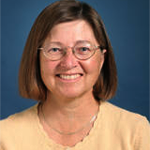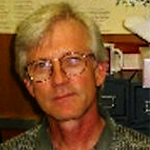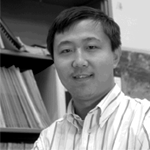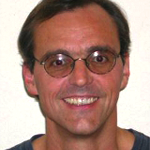
Edith Allen
Dr. Allen is a plant ecologist with research emphasis on the effects of nitrogen deposition on native plant communities, restoration of native vegetation, and the functions of mycorrhizal fungi in plant communities. With colleagues Bytnerowicz and Minnich she originally proposed that N deposition is a primary cause of increased productivity of the fuel lead of invasive annual grasses. She has served as Editor-in-Chief of the journal Restoration Ecology since 1999. She has an appointment through UC Cooperative Extension that will be instrumental in dissemination and application of research findings.
Bai-Lian Li
A quantitative, theoretical ecologist, Dr. Li concentrates on the flow of energy and materials through space and time. He has experience working in interdisciplinary teams and using non-linear systems transcending the local to the global levels. Dr. Li is the Editor-in-Chief of the new journal Ecological Complexity that will have its inaugural issue this spring. He will provide complexity theory and methodology support to spatial and temporal dynamic vegetation analysis for this project.
Richard Minnich
Dr. Minnich studies fire ecology of southern California, Baja California and temperate Mexico, as well as exotic plant invasions and climate change. His recent projects include fire history and vegetation dynamics in the Sierra San Pedro Martir, Baja California, Mexico; changes in the coastal sage scrub of the Riverside/Perris plain; fire and postfire succession in the Mojave Desert. He is the author of a landmark study in Science on impacts of fire suppression on fire dynamics in chaparral.
Gail Tonnesen
Dr. Tonnessen's research group uses computer simulation models to study the chemistry and transport of trance species in the troposphere. She is also developing an integrated environmental modeling effort in collaboration with colleagues at UCR to estimate nitrate and ammonium deposition across the western U.S. Current activities funded by the USEPA and USDA Forest Service include coupled modeling of emissions, including wildfires, chemistry, transport and deposition for the continental US. This will be extended to a finer resolution 4 km scale and validated in this effort.
Michael Allen
Dr. Allen's expertise in mycorrhizal fungi, including the effects of global climate change on below-ground ecosystems and the role that mycorrhizae can play in restoration of ecosystems damaged by fire, volcanic eruption or human activity. Since 1998, he has directed the Center for Conservation Biology, which brings impartial scientific data to bear on regional planning efforts concerning endangered species. His role in this research will be to evaluate belowground biomass to parameterize the CENTURY model.
Andrzej Bytnerowicz
Dr. Bytnerowicz has extensive experience in measurements of air pollution, especially atmospheric concentrations, deposition rates, and leaf surface impacts of nitrogenous air pollutants. His recent research includes measurements of atmospheric deposition at the Salton Sea and Joshua Tree NP. His work, along with his Forest Service colleague Mark Fenn, has brough the N deposition problems of southern California to the forefront. Prior to their work, the extraordinarily high levels of dry N deposition were not known, and the semiarid climate of California was only recently recognized as impacted by high levels of N deposition.
Mark Fenn
Dr. Fenn has become internationally recognized for measuring high rates of N deposition to western forests, and for determining impacts on the forest ecosysems. He proposed that local forests are N-saturated and subject to deleterious impacts of high N, and has published landmark papers on this topic in Ecological Applications and Bio Science.
Peng Gong
Dr. Gong conducts research in remote sensing, image processing, analysis and application; GIS theory, techniques and application; and global change. He serves as Editor-in-Chief of Geographical Information Sciences and Editor of International Journal of Remote Sensing. He has experience in the use of remote sensing for detection of invasive species, and in developing the algorithms required to detect the presence of invasive species.
Jirka Simuek
Dr. Simunek is the originator of the HYDRUS model that is central to understanding N movement in this effort, and will be linked with the CENTURY model. He has experience with hydrologic systems in semiarid environments and with modeling nutrient throughput processes, multicomponent major ion chemistry, and field-scale spatial variability. He is an associate editor of the Vadose Zone Journal.
Pete Sadler
Dr. Sadler is a geologist whose primary expertise includes numerical modeling of the fossil record. Together Sadler and Minnich have taught Applied Fire Effects Course (Rx510) at the National Advanced Resource Technology Center, Tucson. Sadler developed the FUELFIRE model to examine the landscape scale and long term implications of Minnich's empirically-derived rules for the dynamics of fire-modulated patch mosaics. The FUELFIRE model simulates fire size dynamics in a fashion that will allow us to add simple vegetation dynamics. Minnich tunes the FUELFIRE model to simulate particular landscapes, constraining the input variables via remote sensing; Sadler explores a wider range of these variables to fine the threasholds between generic regimes pf patch mosaic behavior.








